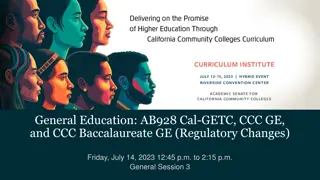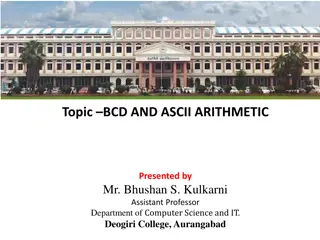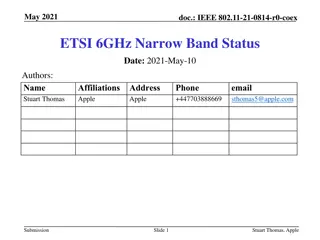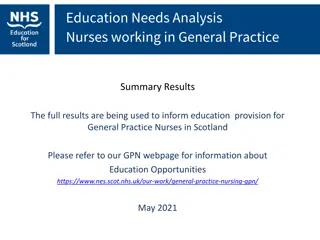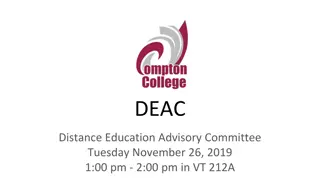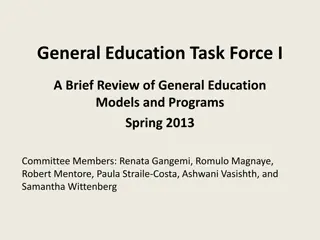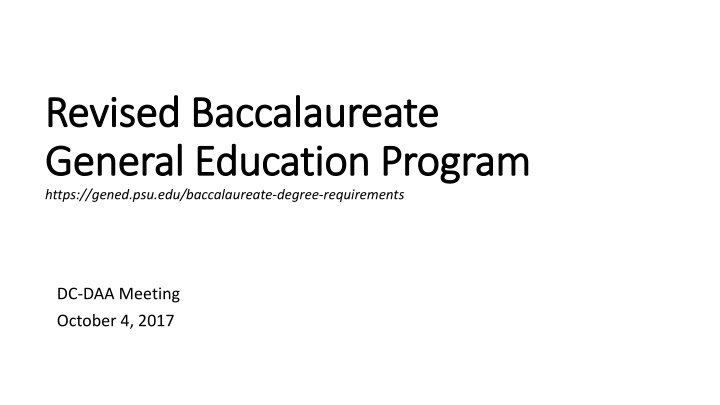
University General Education Requirements Overview
Explore the comprehensive overview of the general education requirements for a Baccalaureate degree program, including skills, knowledge domains, additional graduation requirements, and course substitutions. Learn about credit distribution, integrative studies, and more to plan your academic journey effectively.
Download Presentation

Please find below an Image/Link to download the presentation.
The content on the website is provided AS IS for your information and personal use only. It may not be sold, licensed, or shared on other websites without obtaining consent from the author. If you encounter any issues during the download, it is possible that the publisher has removed the file from their server.
You are allowed to download the files provided on this website for personal or commercial use, subject to the condition that they are used lawfully. All files are the property of their respective owners.
The content on the website is provided AS IS for your information and personal use only. It may not be sold, licensed, or shared on other websites without obtaining consent from the author.
E N D
Presentation Transcript
Revised Baccalaureate Revised Baccalaureate General Education Program General Education Program https://gened.psu.edu/baccalaureate-degree-requirements DC-DAA Meeting October 4, 2017
Skills Skills Foundations (C or better) Foundations (C or better) Writing/Speaking (GWS) (e.g., ENGL 15/30, ENGL 202, CAS 100) 9 credits Quantification(GQ) 6 credits Total 15 credits
Knowledge Domains Knowledge Domains Health and Physical Activity (GHA) Wellness (GHW) 3 credits Natural Sciences (GN) 9 credits Arts (GA) 6 credits Humanities (GH) 6 credits Social and Behavioral Sciences (GS) 6 credits 6 credits (courses may double-fulfill) Integrative Studies Total 30 credits
Additional University Graduation Requirements Additional University Graduation Requirements First-Year Engagement campus-specific 6 credits (courses may double-fulfill) 6 credits (courses may double-fulfill) United States/International Cultures (US/IL) Writing Across the Curriculum (W/M/X/Y)
Revised 3 Revised 3- -6 6- -9 Substitution 9 Substitution Current Substitute a third course in one of the Knowledge Domain areas of Arts, Humanities, or Social and Behavioral Sciences, for a second course in one of the other areas. This substitution is often referred to as 3-6-9, representing the 3 credits, 6 credits, and 9 credits completed in place of the specified 6-6-6. Example: a student takes three courses in the Arts, two courses in the Humanities, and only one course in the Social and Behavioral Sciences. Revised Substitute a course in one of the Knowledge Domains areas of Arts, Humanities, Social and Behavioral Sciences, Natural Sciences, or Health and Wellness for a course in one of the other areas. This substitution is referred to as Move 3. Example: a student takes six credits in the Natural Sciences and six credits in Health and Wellness
Integrative Studies Requirement Integrative Studies Requirement Completed either by six credits of Inter-domain courses (i.e., a single course meeting learning outcomes for two Knowledge Domains) or six credits of Linked courses (i.e., two courses meeting the learning outcomes of two different Knowledge Domains) Inter-domain and Linked courses may double fulfill Integrative Studies and Knowledge Domain credits However, although Inter-domain course credit may apply to both Knowledge Domain designations, it does not reduce the total number of 30 credits within the Knowledge Domains However, at least three credits of single-domain coursework are required in each of the five Knowledge Domains (i.e., a pure domain course, whether linked or not) Linked courses used for the Integrative Studies requirement must represent two different Knowledge Domains.
Example of Domain Objectives Example of Domain Objectives Arts (GA) Explain the methods of inquiry arts fields and describe how the contributions of these fields complement inquiry in other areas Demonstrate expanded knowledge and comprehension of the role that the arts play in various aspects of human endeavor Demonstrate competence in the creation of works of art and design Demonstrate competence in analysis, critical thinking and interpretive reasoning through the exploration of creative works Identify and explain the aesthetic, historical, social, and cultural significance of important works of art and critically assess creative works, their own or others , through evaluative processes of analysis and interpretation. NB: every GA course must meet at least three of the five objectives
Example of Domain Objectives Example of Domain Objectives Arts (GH) Explain the methods of inquiry humanities fields and describe how the contributions of these fields complement inquiry in other areas Demonstrate competence in critical thinking about topics and texts in the humanities through clear and well-reasoned responses Critically evaluate texts in the humanities whether verbal, visual, or digital and identify and explain moral or ethical dimensions within the disciplines of the humanities Demonstrate knowledge of major cultural currents, issues, and developments through time, including evidence of exposure to unfamiliar material that challenges their curiosity and stretches their intellectual range Become familiar with groups, individuals, ideas, or events that have influenced the experiences and values of different communities NB: every GH course must meet at least three of the five objectives
Examples of Integrative Courses Examples of Integrative Courses Fashion, Identity, and Gender in America (Behrend) Politics of Hip Hop (Berks) Cinema and Globalization (Greater Allegheny) Art and Science of Virtual Worlds (Schuylkill) Art and Philosophy in Ancient Greece (Worthington Scranton) On Bullshit (Eberly and Liberal Arts)
Recommended Campus Implementation of the Recommended Campus Implementation of the Integrative Requirement Integrative Requirement 2018-2019 AY pilot a few classes 2019-2020 AY 40% - 50% of annual requirement 2020-2021 AY 75% - 80% of annual requirement 2021-2022 AY 100% of annual requirement
What is the Annual Requirement for My Campus? What is the Annual Requirement for My Campus? DRAFT Model In a given year: 50% of your first-time students (0-29 credits) 60% of the students in the second-year cohort (30-59 credits) 50% of the students in the third-year cohort (66-89 credits) 60% of the students in the fourth-year cohort (90 or more credits) Plus: seats for advanced standing students?
What is the Annual Requirement for My Campus? What is the Annual Requirement for My Campus? Example for Campus #1 50% of 300 first-year students = 150 seats 60% of 240 second-year students = 144 seats 50% of 120 third-year students = 60 seats 60% of 110 fourth-year students = 66 seats Total: 420 seats ( = 14 sections at 30 seats apiece) Plus: seats for advanced standing students?
What is the Annual Requirement for My Campus? What is the Annual Requirement for My Campus? Example for Campus #2 50% of 1000 first-year students = 500 seats 60% of 720 second-year students = 432 seats 50% of 450 third-year students = 225 seats 60% of 380 fourth-year students = 228 seats Total: 1385 seats ( = 46-47 sections at 30 seats apiece) Plus: seats for advanced standing students?
Points to Consider Points to Consider The revised program applies to students starting in Summer 2018 and later The number of pure knowledge domain courses you need to offer will decrease The Office of General Education provided funding for seed grants this summer: 40 at Commonwealth Campuses and 31 at UP; more in fall The Office of General Education has a link for faculty members looking for collaborators on inter-domain and linked courses Current general education courses need to be recertified by the Faculty Senate
Course Recertified So Far Course Recertified So Far AG 160 Introduction to Ethics and Issues in Agriculture NURS 407 Drugs of Abuse and Mental Health Issues WMNST 105 Living in a Diverse World

